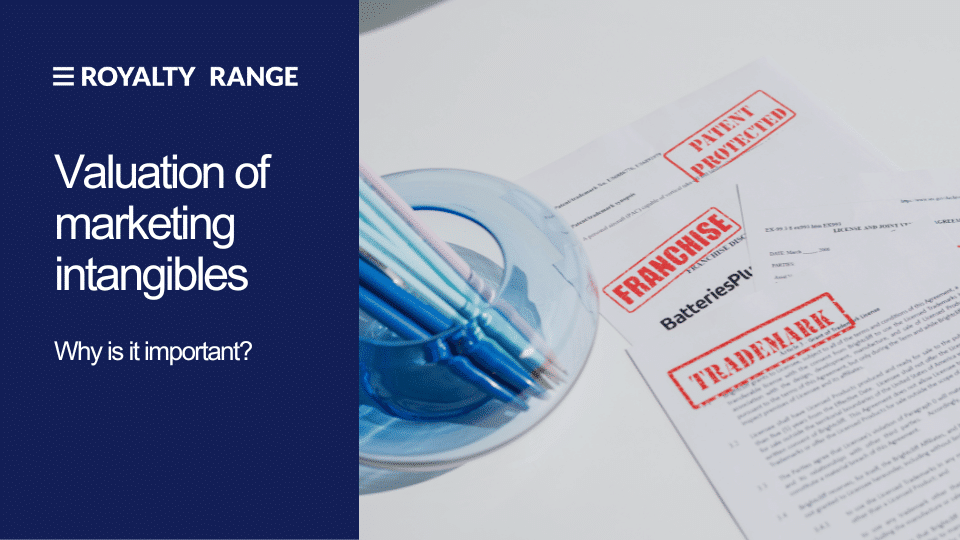Valuation of marketing intangibles
December 15, 2023

Valuation of marketing intangibles refers to the process of determining the monetary value or worth of intangible assets associated with marketing efforts. These intangibles can include brands, trade names, trademarks, and other non-physical assets that contribute to a company’s marketing advantage and market position.
Valuing marketing intangibles is crucial for various reasons:
- Financial Reporting: Companies need to report the value of their intangible assets for financial statements, such as balance sheets and annual reports.
- Mergers and Acquisitions: During mergers or acquisitions, determining the value of marketing intangibles helps in assessing the overall worth of the company.
- Taxation Purposes: Accurate valuation is important for tax compliance and assessment.
- Investment and Financing: Investors and lenders often consider the value of intangible assets when making investment or lending decisions.
Valuation methods for marketing intangibles can vary and may include several approaches. The most commonly used:
- Cost Approach: This method involves determining the cost to recreate the marketing intangible. However, this approach might not consider the true economic value.
- Market Approach: This approach compares the asset to similar assets that have been sold recently in the market. It’s effective if there are comparable market transactions.
- Income Approach: Here, the valuation is based on the income generated or expected to be generated by the intangible asset. Methods like discounted cash flow analysis or relief-from-royalty methods fall under this approach.
Valuation of a Brand name
Valuation of a brand name involves assessing the monetary value or worth of the intangible asset represented by the brand. A brand name is a crucial intangible asset for a company as it often embodies the company’s reputation, consumer perception, and market positioning. Valuing a brand name is important for various financial, strategic, and operational purposes, including financial reporting, mergers and acquisitions, licensing agreements, and more.
Factors influencing the valuation of a brand name include:
- Brand Awareness: The level of recognition and familiarity among consumers.
- Brand Loyalty: The extent to which consumers are committed to a particular brand.
- Brand Associations: Perceived qualities and attributes associated with the brand.
- Market Positioning: The brand’s position in the market relative to competitors.
Valuation of a Trademark
Trademark valuation involves determining the monetary value of a company’s trademark, which is a vital intangible asset representing its brand identity, reputation, and goodwill in the market. Several factors are crucial in the process of trademark valuation:
- Legal Protection and Registrations: The strength and extent of legal protection surrounding the trademark, including registrations, trademarks in multiple jurisdictions, and any legal history of disputes or challenges, significantly influence its value.
- Brand Recognition and Reputation: The level of brand recognition and reputation associated with the trademark is a fundamental factor. Higher recognition and a positive reputation often lead to a higher valuation.
- Market Position and Competitive Advantage: The position of the trademarked brand in the market, its competitiveness, market share, and the advantage it offers over competitors contribute to its value.
- Financial Performance and Revenue Generation: The financial performance directly linked to the trademark, such as revenue generation, profitability, and future income projections, is essential in determining its value.
- Scope of Use and Licensing Opportunities: The potential for licensing the trademark for various products, services, or industries, and the scope of its use in different markets or geographic regions impact its value.
- Lifecycle and Durability: The stage of the trademark’s lifecycle, its longevity, and potential changes in market trends or consumer behavior affect its valuation.
- Market Conditions and Industry Trends: Current market conditions, industry trends, and the potential impact of these factors on the trademark’s future performance and relevance are also considered.
Valuation of marketing intangibles often requires expertise in finance, accounting, and marketing to properly assess and quantify the value of these intangible assets. Additionally, it’s essential to consider legal and regulatory aspects that might impact the valuation process. RoyaltyRange offers the possibility to have accurate and reliable data for your valuation. High-quality data complies with the requirements of OECD BEPS. Agreements are manually analyzed for more than 50 comparability factors, with detailed functional, risk, cost, and asset analyses. You will get fully analyzed, clean, and structured data for each agreement.
Check the possibilities of the RoyaltyRange Royalty Rates database here. Ask for a trial version or live demo here.




